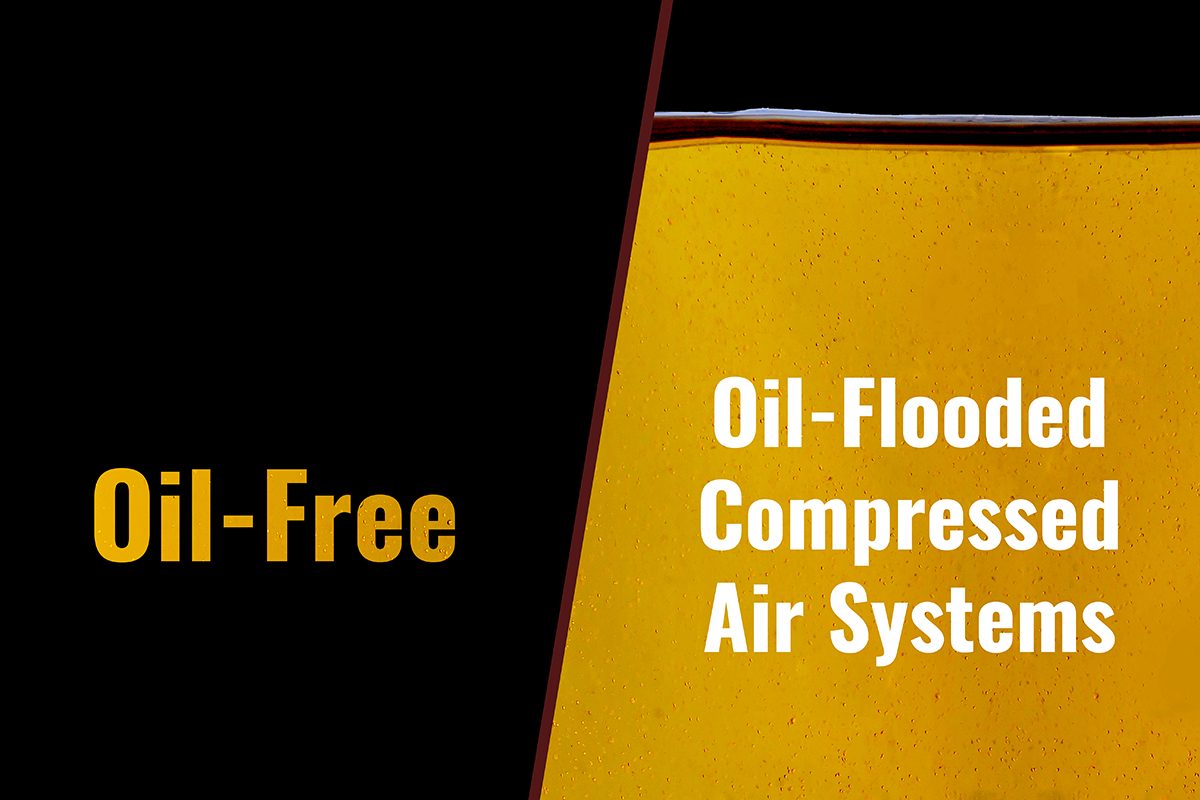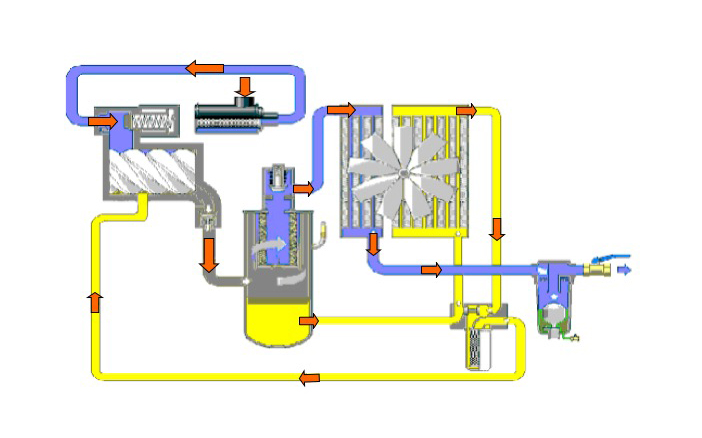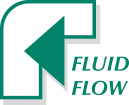Oil-Free Vs. Oil-Flooded Compressed Air Systems: Which is Best for Your Operation?

Oil-Free Air Compressors
The term “oil-free compressed air” is often used to describe compressed air that is generated by oil-free compressors. This category of compressor includes centrifugal, oil-free rotary screw and non-lubricated reciprocating compressors. These machines are designated as “oil-free” because they do not use lubricants within the compression chamber.
Oil-Flooded Air Compressors
Oil-flooded compressors have lubricated compression chambers and use air/oil separators to remove the oil from the compressed air. However, as the oil collects, the oil can mix with the condensed water and cause problems for other components of your equipment as it makes its way downstream and into your facility. Under normal circumstances, lubricants and hydrocarbons can also enter oil-free compressors in vapor states through the inlet air filter, but on a much smaller scale than oil-flooded compressors.
The most common examples of oil-flooded compressors are oil-flooded rotary screw machines, lubricated reciprocating and rotary vane compressors. In most cases, manufacturers of these compressors report oil carryover in parts per million by weight (PPMw).
Consider a 200 HP oil-flooded rotary screw air compressor rated at 1000 Inlet Cubic Feet per Minute (ICFM). Most manufacturers of this size and type of compressor flood approximately 82 Gallons per Minute (GPM) of lubricant into the compressor air end (compression chamber) to seal and cool the compressor. The compressor manufacturer must then find a way to separate most of this oil to minimize downstream oil contamination. Most manufacturers claim that new oil-flooded screw compressors reduce downstream oil contamination to 2 PPMw.
Simple Single-Stage Oil-Flooded Rotary Screw Flow Diagram

Unlike oil-free compressed air systems, oil-flooded compressors require specialized equipment, such as oil separators and filtration systems to minimize the threat of oil carryover from impacting other critical system components downstream.
Continuing with the 200 HP compressor example, oil carryover can be calculated as follows:

Assuming that this compressor operates efficiently with reduced downstream oil contamination at 2 PPMw and that runtime is 8,000 hours per year, the annual oil carryover can be calculated:

Most people have a hard time visualizing how much 2 PPMw downstream oil contamination amounts to over time, but you can easily picture what 40 quarts (or 40 1-quart bottles of motor oil) looks like.
Remember the above example assumed that we were running an efficient air compressor. In the real world, many lubricated compressors run at considerably higher oil carryover levels. In fact, we know of many installations that frequently run over 25 PPMw. Most often, high oil carryover on flooded screw compressors can be attributed to inefficient oil separators, frequent starting and stopping and reservoir blowdown.
The following table shows oil carryover in both PPMw and quarts per year for the same 200 HP air compressor.
| Oil Carryover for 200 HP | |
|---|---|
| PPMw | Quarts/Year |
| 2 | 40 |
| 5 | 100 |
| 10 | 200 |
| 15 | 300 |
| 20 | 400 |
| 25 | 500 |
Suffice it to say, oil-flooded rotary screw air compressors are not oil-free. At 25 PPMw carryover, 500 quarts of lubricant actually passes downstream each year.
Depending on your specific operation and needs for compressed air, you may be able to control oil carryover with a coalescing filter installed downstream from your compressor. However, you may find more long-term return on your investment with an oil-free compressed air solution.
To learn more about oil-free air compressors or filtration products designed to remove oil, contact the experts at Fluid Flow. Fluid Flow’s helpful and knowledgeable team can recommend a compressed air solution for your operation that is designed to maximize efficiency while minimizing hidden energy and maintenance costs.

